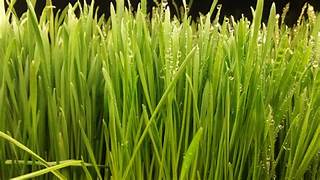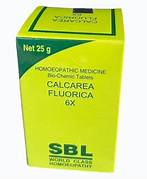Wheatgrass refers to the young, tender shoots of the common wheat plant (Triticum aestivum), typically harvested 7-10 days after sprouting, before it develops into full wheat. It is often consumed as a fresh juice, powder, tablet, or in supplement form and is considered a “superfood” due to its dense nutrient profile. It contains high levels of chlorophyll (up to 70% of its content), which gives it a vibrant green color and is structurally similar to hemoglobin in human blood.
Nutritionally, wheatgrass is low in calories but packed with:
- Vitamins: A, C, E, K, and B-complex (including B12 in trace amounts).
- Minerals: Iron, magnesium, calcium, potassium, selenium, zinc, and phosphorus.
- Other compounds: Antioxidants (e.g., flavonoids, phenolic acids), enzymes (e.g., superoxide dismutase), amino acids (all 17, including 8 essential ones), and fiber.
- It is gluten-free in its young form, as gluten develops later in the wheat grain.
Wheatgrass is typically grown hydroponically or in soil, and its preparation involves juicing the fresh blades or drying them into powder. It has an earthy, grassy taste that some find bitter, so it’s often mixed with fruits or vegetables in smoothies.
Health Benefits of Wheatgrass
Wheatgrass offers a range of potential health benefits primarily due to its antioxidant, anti-inflammatory, and nutrient-rich properties. Benefits include improved detoxification, immune support, and management of chronic conditions. Below is a breakdown of key benefits, followed by age-specific considerations.
General Health Benefits
- Antioxidant and Anti-Inflammatory Effects: Wheatgrass neutralizes free radicals, reducing oxidative stress and inflammation, which may help with conditions like arthritis, joint pain, and chronic inflammation.
- Immune System Boost: Its vitamins (especially C and E) and antioxidants enhance immune function, helping fight infections and potentially supporting cancer prevention or as an adjunct to treatments like chemotherapy by mitigating side effects.
- Detoxification and Digestion: Chlorophyll aids in detoxifying the liver and blood, while enzymes improve digestion, alleviate constipation, bloating, and gastrointestinal issues like ulcerative colitis.
- Blood Sugar and Cholesterol Management: It may stabilize blood glucose levels and reduce total cholesterol and triglycerides, benefiting those with diabetes or heart disease risks.
- Cancer Support and Prevention: Antioxidants may protect cells from damage, reduce cancer risk, and help manage side effects of treatments, though it’s not a cure.
- Energy, Weight Loss, and Vitality: Provides sustained energy without caffeine, supports metabolism for weight management, and may improve skin health, wound healing, and oral hygiene.
- Other Potential Benefits: May lower blood pressure, prevent gray hair, improve blood circulation, and support mental health by reducing stress.
Health Benefits by Age Groups
It is generally safe for most healthy individuals across ages, suggesting universal applicability for immunity and nutrition. However, dosage should be adjusted (e.g., smaller for children), and consultation with a healthcare provider is advised, especially for vulnerable groups.
- Children (Ages 2-12): Wheatgrass can support growth and development through its vitamins and minerals, boosting immunity to fend off common infections like colds. It may aid digestion and provide natural energy for active kids. However, some sources recommend avoiding it for very young children due to potential digestive upset or contamination risks. Start with diluted juice (1/2-1 oz daily) if approved by a pediatrician. Benefits include enhanced nutrient intake for bone health (calcium, magnesium) and cognitive development (antioxidants for brain protection).
- Adolescents and Young Adults (Ages 13-30): This group may benefit from wheatgrass’s detoxifying effects to counter poor diets or environmental toxins, supporting skin health (e.g., acne reduction via anti-inflammatory properties) and energy for studies or sports. It can help with weight management and blood sugar stability during hormonal changes.
- Middle-Aged Adults (Ages 31-60): Focuses on preventive health; wheatgrass may reduce cholesterol, blood pressure, and inflammation to lower risks of heart disease, diabetes, and obesity. It supports immune function amid stress and aids detoxification for liver health. Benefits extend to anti-aging effects on skin and hair.
- Elderly (Ages 61+): Anti-inflammatory properties can improve joint mobility and reduce arthritis pain, while antioxidants support cognitive health and prevent neurodegenerative issues. It boosts immunity against age-related vulnerabilities, stabilizes blood cells for better oxygenation, and aids digestion to combat constipation common in seniors. However, those with weakened immunity should use caution. Start with low doses and monitor for interactions with medications.
Side Effects, Precautions, and Conditions Where People Should Avoid Wheatgrass
While wheatgrass is generally safe when consumed in moderation , it can cause side effects, especially if raw or contaminated with bacteria/mold from improper growing. Most adverse effects are mild and subside with time or reduced dosage.
Common Side Effects
- Digestive issues: Nausea, vomiting, diarrhea, constipation, upset stomach, or bloating (often from detox “die-off” or high fiber).
- Allergic reactions: Hives, itching, swelling (throat or face), respiratory issues, or anaphylaxis in those allergic to wheat, grass, or pollen.
- Other: Headache, fatigue, lightheadedness, fever, or strong taste leading to difficulty swallowing.
Conditions and Groups That Should Avoid or Use Caution
Avoid wheatgrass if you have:
- Wheat or Grass Allergies/Intolerances: Including celiac disease or gluten sensitivity, as cross-contamination is possible.
- Pregnancy or Breastfeeding: Insufficient safety data; potential risks to fetus or infant.
- Compromised Immune Systems: E.g., HIV, chemotherapy patients, or organ transplant recipients, due to raw wheatgrass contamination risks.
- Diabetes or Blood Sugar Issues: May lower blood sugar too much when combined with medications.
- Young Children (Under 2): Due to immature digestive systems and contamination concerns.
- Medication Interactions: With blood thinners, diabetes drugs, or immunosuppressants; consult a doctor.




